Ample water is not a requirement for a beautiful garden. Water-conservation in the garden is very doable. Water-smart gardening can save time and money.
A drought-tolerant garden makes the most of the water it gets. “Xeriscaping” is a term used for growing naturally drought-adapted plants using water-saving methods.
A xeriscape does not need to look like a desert. A xeriscape can easily be mistaken for a well-watered garden.
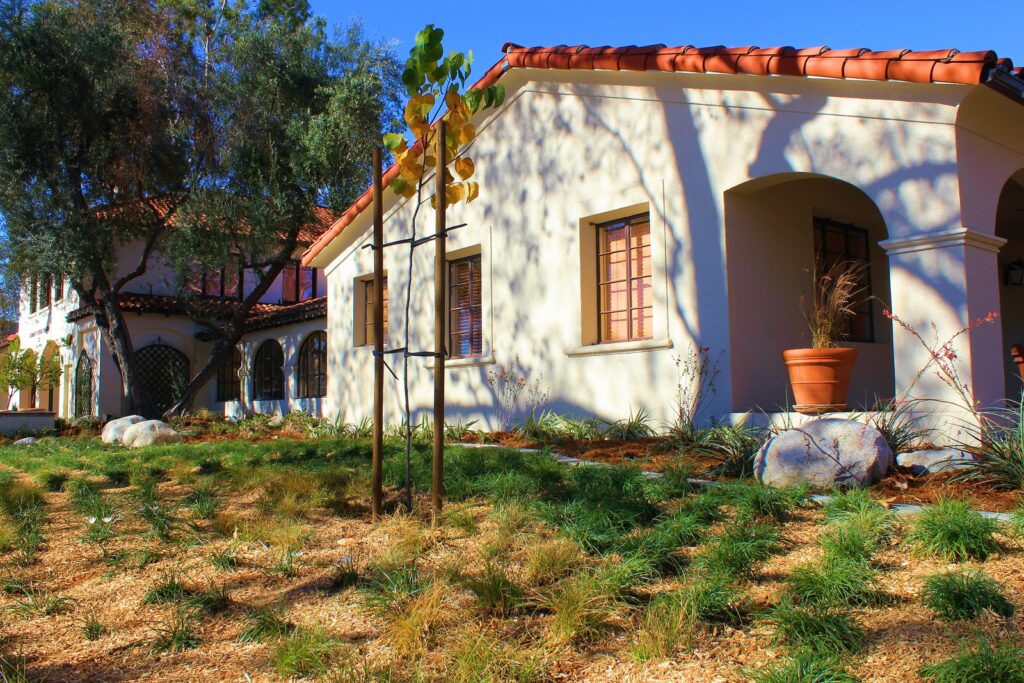
How to grow a drought-tolerant garden
Here are some basic ways to grow a xeriscape, drought-tolerant garden:
Plant selection
Choose plants that don’t require a lot of water. Plants native to your region are a good place to begin; they are adapted to the rainfall in your region. Choose plants native to other regions of the world similar to where you live; they too will survive on the rainfall in your region.
Prepare the soil
Prepare the soil in your garden to hold water. Humus or soil rich in aged organic matter naturally holds water and is well-drained. Humus is dark brown or black and crumbly; it is not sandy or clay-like. Humus soil particles are sponge-like; they hold water and emit it slowly. Add aged compost or commercial organic planting mix to your planting beds to create a humus-rich soil. Add 6 inches of aged compost or commercial organic planting mix to your planting beds and turn it under to 10 inches; add more aged compost to the soil surface twice a year.
Group plants
Group plants together by their water needs. This will make watering easier. Group moisture needy plants together where the soil is naturally moist or plant them where they are shaded in the afternoon. The north side of a building or wall will be less dry than the south side. Group very drought-tolerant plants together as well; these can be watered occasionally rather than regularly. Group plants by their soil needs; some plants prefer sandy soil, others not.
Use the shade
In hot and dry regions use afternoon shade to protect plants that need more water than others in the garden. Midday to midafternoon is the warmest time in the garden and the time when soil moisture evaporates most quickly. Plants in pots and containers will need less water if they get afternoon shade.
Mulch around plants
Mulch will stem soil moisture evaporation and protect plant roots in hot and dry regions. Mulch will keep the soil cool. Mulch suppresses weeds which compete with ornamental plants for soil moisture. Aged compost or planting mix are good mulches which feed the soil. You can also mulch with chopped leaves, straw, and even gravel.
Drip irrigation
Drip irrigation is a good way to save water. Micro-irrigation lines and emitters deliver water directly to plants; water is not wasted on unplanted areas of the garden. Drip irrigation systems can be placed on timers to deliver water in cooler times of the day when there is less evaporation. If you don’t want to install an irrigation system, run hoses to planting beds and use water wands or hose-end sprinklers to deliver water exactly where plants need it.
Reduce lawn
Replace water needy lawns with flowers and shrubs. Lawn grasses are shallow-rooted and need more water more often than deeper-rooted annuals, perennials, and shrubs. Flowering groundcover plants mixed with perennials and shrubs can replace lawns. Replace large lawns with stroll paths and flower beds.
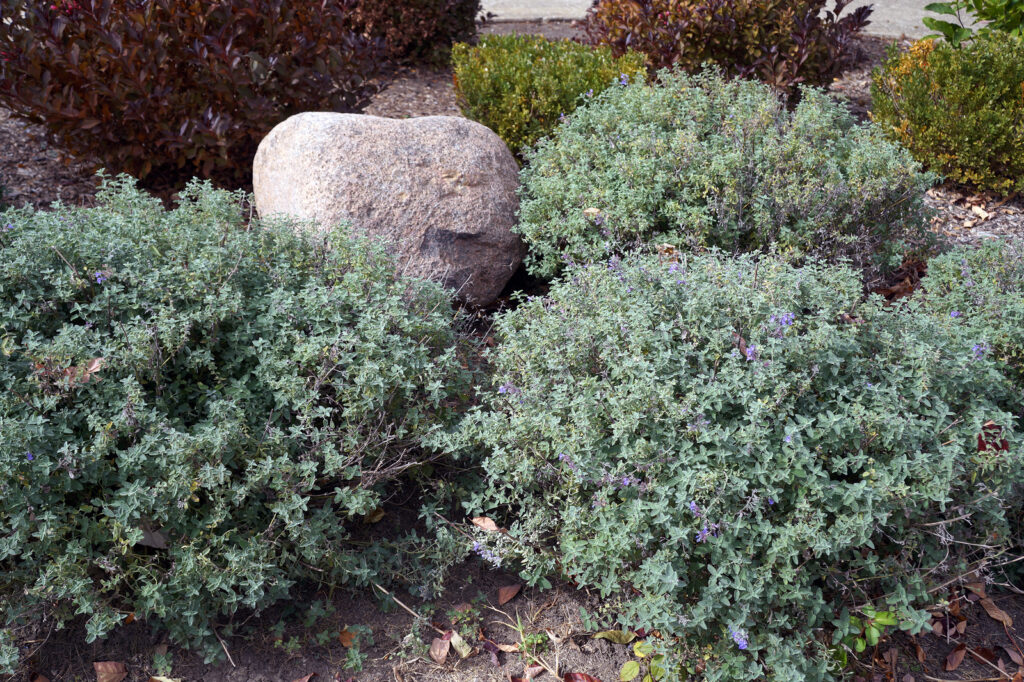
How to spot drought-tolerant plants
Many plants have evolved to conserve water; plant color and texture are often indicative of drought-tolerant plants. Here are some characteristics of plants that need less water:
- Silver or gray leaves
- Hairy or furry leaves
- Thick, waxy, and succulent leaves
- Small, fine-textured leaves
- Thorns
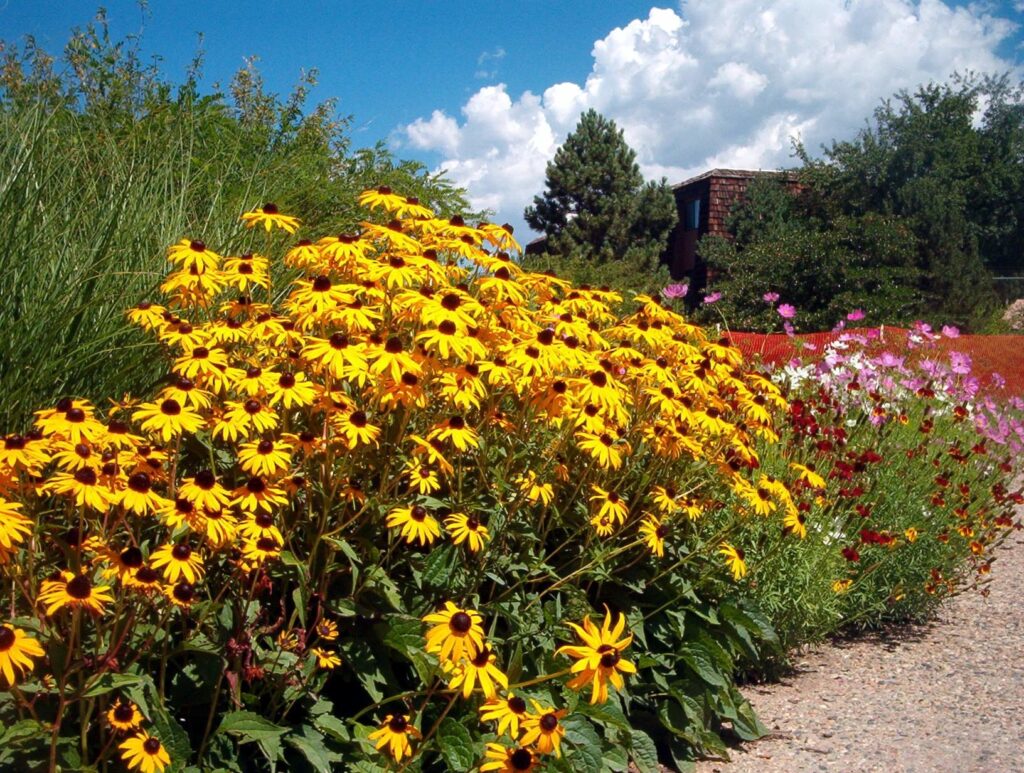
Drought-tolerant annuals and perennials
| Common Name | Botanical Name | Zones |
| Agapanthus | Agapanthus spp. | 8-10 |
| Agave | Agave spp. | 8-11 |
| Aloe | Aloe spp. | Varies |
| Artemisia | Artemisia spp. | Varies |
| Baby’s breath | Gypsophila paniculata | 3-9 |
| Basket-of-gold | Aurinia saxatilis | 4-8 |
| Bear’s breeches | Acanthus mollis | 6-10 |
| Black-eyed Susan | Rudbeckia fulgida | 3-10 |
| Blanket flower | Gallardia x grandiflora | 2-10 |
| Blazing star | Liatris spicata | 3-9 |
| Butter daisy | Melampodium leucanthum | Annual |
| Butterfly weed | Asclepias tuberosa | 4-10 |
| California poppy | Eschscholizia californica | Annual |
| Catmint | Nepeta x fassenii | 4-9 |
| Coneflower, purple | Echinacea purpurea | 3-9 |
| Coreopsis | Coreopsis spp. | 4-9 |
| Cosmos | Cosmos spp. | Annual |
| Echeveria (most) | Echeveria spp. | 8-11 |
| Euphorbia (most) | Euphorbia spp. | Varies |
| Evening primrose, showy | Oenothera speciosa | 3-9 |
| False sunflower | Heliopsis helianthoides | 4-9 |
| Feather grass | Stipa spp. | Varies |
| Flax | Linum perenne | 5-8 |
| Flax, New Zealand | Phormium tenax | 8-11 |
| Fountain grass | Pennisetum alopecuroides | 5-9 |
| Gaura | Gaura lindheimeri | 5-9 |
| Geranium, hardy | Geranium sanguineum | 3-8 |
| Iris, bearded | Iris x germanica | 3-10 |
| Lamb’s ears | Stachys byzantina | 4-8 |
| Lavender, English | Lavandula angustifolia | 5-8 |
| Love-in-a-mist | Nigella damascena | Annual |
| Marigold | Tagetes spp. | Annual |
| Mexican sunflower | Tithonia rotundifolia | Annual |
| Moss rose | Portulaca grandiflora | Annual |
| Muhly grass | Muhlenbergia spp. | 7-10 |
| Naked ladies | Amaryllis belladonna | 5-9 |
| Ox-eye daisy | Leucanthemum vulgare | 5-9 |
| Penstemon | Penstemon spp. (many) | Varies |
| Poppy | Papaver spp. | Varies |
| Pot marigold | Calendual officinalis | Annual |
| Red-hot poker | Knifphofia uvaria | 5-9 |
| Red valerian | Centranthus ruber | 4-8 |
| Russian sage | Perovskia atriplicfolia | 3-9 |
| Santolina | Santolina chamaesyparisus | 6-9 |
| Sea lavender | Limonium spp. | 8-11 |
| Sea thrift | Armera maritima | 3-8 |
| Sedums; stonecrop | Sedum spp. | 4-9 |
| Snow-in-summer | Cerastiu tomentosum | 3-7 |
| Spider flower | Cleome hasslerana | Annual |
| Spurge, cushion | Euphorbia polychroma | 4-8 |
| Statice | Limonium spp. | Varies |
| Strawflower | Helichrsyum braceatum | Annual |
| Sunflower | Helianthus annuus | Annual |
| Swan river daisy | Brachycome iberidifolia | Annual |
| Verbena (most) | Verbena spp. | Varies |
| Yarrow | Achillea spp. | 3-9 |
| Yucca | Yucca spp. | 4-10 |
| Zinnia | Zinnia elegans | Annual |
| Zinnia, narrow-leaf | Zinnia angustifolia | Annual |
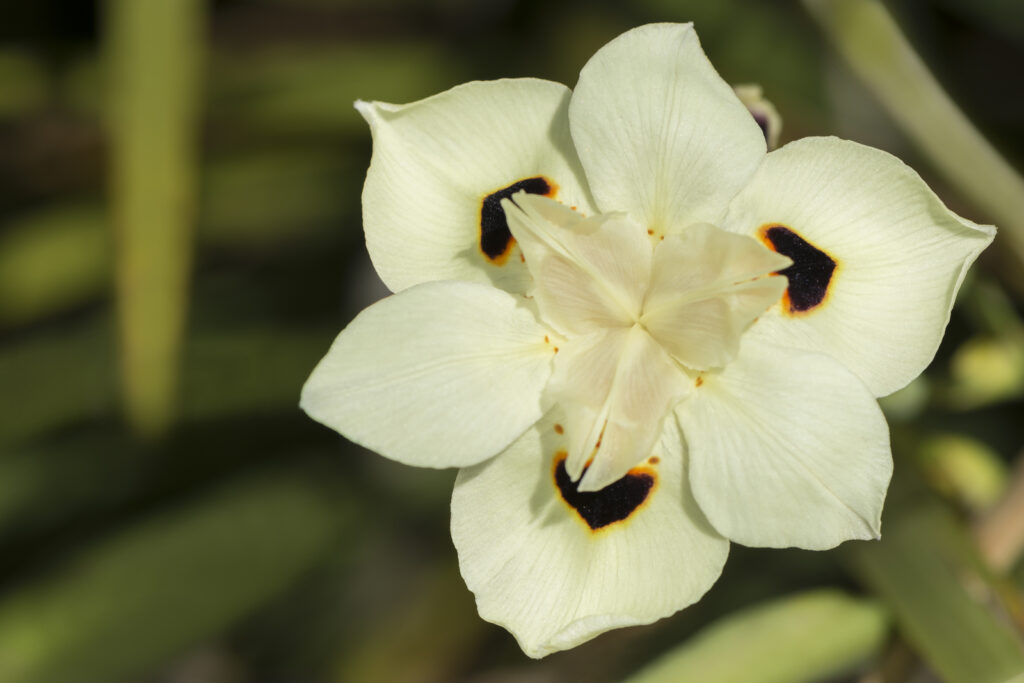
Drought-tolerant bulbs
| Common Name | Botanical Name | Zones |
| Allium, ornamental onion | Allium spp. | 4-10 |
| Amaryllis | Hippeastrum spp. | 7-11 |
| Crocosmia | Crocosmia x crocosmiiflora | 6-9 |
| Crocus | Crocus spp. | 3-8 |
| Iris, German bearded | Iris hybrids | 3-10 |
| Iris, African | Dietes iriodiodes, D. bicolor | 8-10 |
| Peruvian lily | Alstromeria spp. | 6-10 |
| Society garlic | Tolbaghia violacea | 8-11 |
| Tulip | Tulipa spp. | 3-7 |

Drought-tolerant vines
| Common Name | Botanical Name | Zones |
| Bittersweet, American | Celastrus scandens | 3-8 |
| Black-eyed Susan vine | Thunbergia alata | Annual |
| Boston ivy | Parthenocissus tricuspidata | 4-8 |
| Bougainvillea | Bougainvillea | 9-10 |
| Euonymus, wintercreeper | Euonymus fortunei | 4-8 |
| Firethorn | Pyracantha coccinea | 6-9 |
| Honeysuckle, trumpet | Lonicera sempervirens | 4-9 |
| Morning glory | Ipomoea tricolor | Annual |
| Porcelain berry vine | Ampelopsis brevipedunculata | 4-8 |
| Silver lace vine | Polygonum aubertii | 4-9 |
| Trumpet creeper | Campis radicans | 4-9 |
| Viginia creeper | Parthenocissus quinquefolia | 4-9 |
| Wisteria | Wisteria spp. | 5-9 |
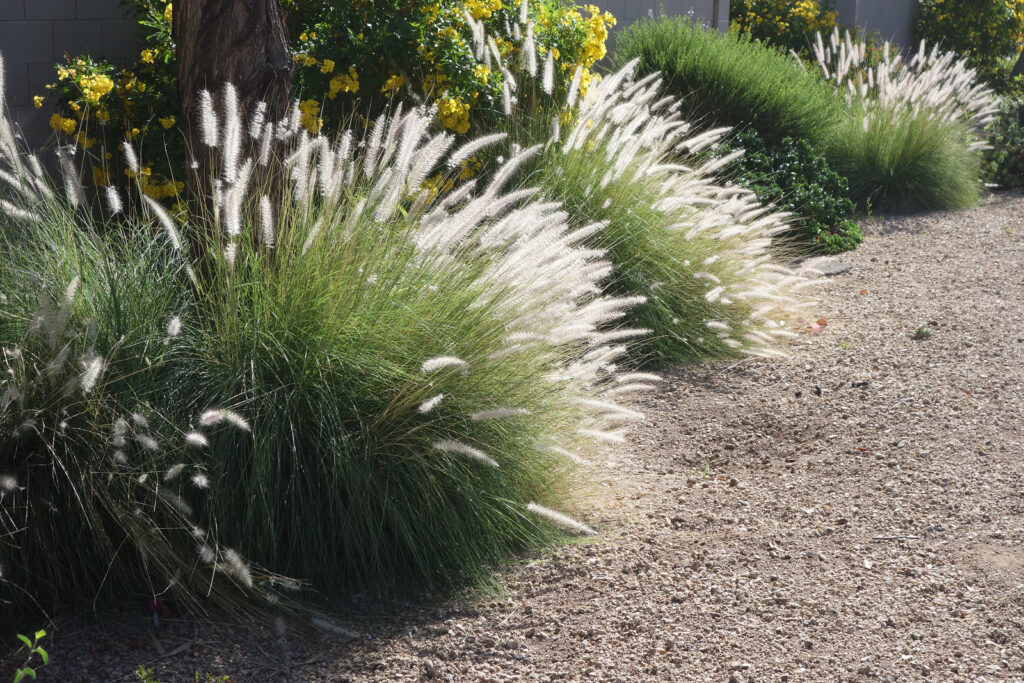
Drought-tolerant ornamental grasses
| Common Name | Botanical Name | Zones |
| Dwarf pampas grass | Cortaderia selloana ‘Pumila’ | 7-10 |
| Blue fescue | Festuca glauca | 4-9 |
| Blue oat grass | Helictotrichon sempervirens | 4-9 |
| Feather grass | Stipa spp. | Varies |
| Fountain grass | Pennisetum alopecuroides | 5-10 |
| Silver grass; miscanthus | Miscanthus sinensis | 5-10 |
| Switch grass | Panicum virgatum | 4-9 |
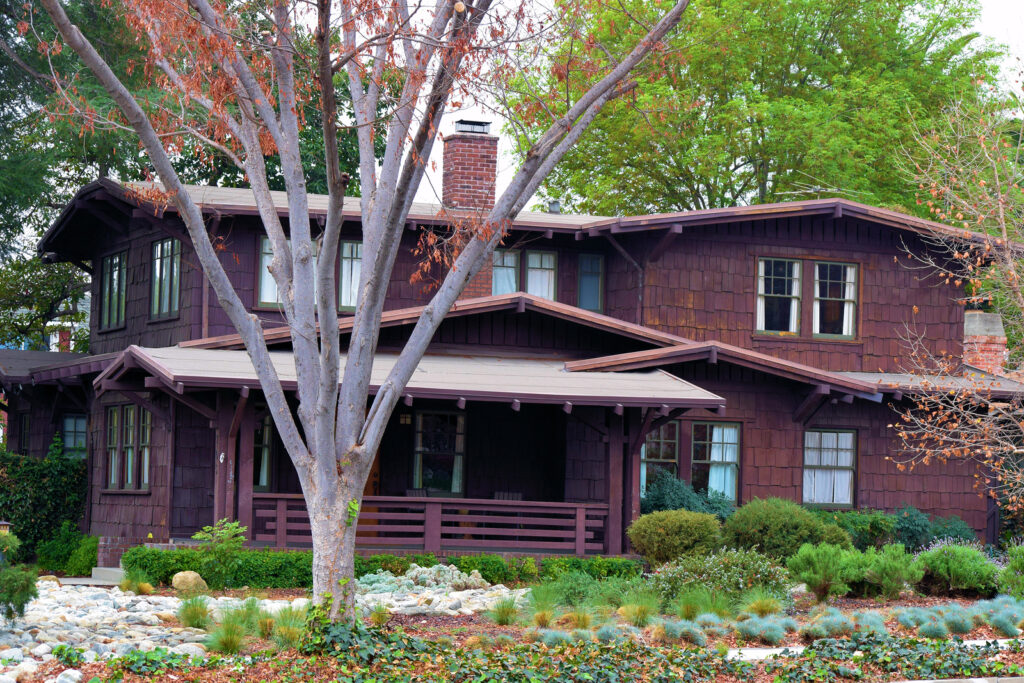
Drought-tolerant shrubs
| Common Name | Botanical Name | Zones |
| Abelia, glossy | Abelia x grandiflora | 6-9 |
| Barberry | Berberis spp. | 4-8 |
| Bayberry, northern | Myric pensylvanica | 2-6 |
| Bluebeard | Caryopteris x clandonensis | 5-8 |
| Brooms | Genista spp., Cytisus spp. | 4-8 |
| Butterfly bush | Buddleia spp. | 5-10 |
| Ceanothus | Ceanothus spp. | 8-10 |
| Chase tree | Vitex agnus-castus | 6-10 |
| Currant, alpine | Ribes alpinum | 2-7 |
| Honeysuckles | Lonicera spp. | Varies |
| Mahonia | Mahonia spp. | Varies |
| Manzanita | Arctostaphylos spp. | Varies |
| Mockorange | Philadelphus spp. | 4-8 |
| Oleander | Nerium oleander | 8-10 |
| Potentilla, shrubby | Potentilla fruticosa | 2-7 |
| Rose-of-Sharon | Hibiscus syriacus | 5-9 |
| Rose, rugosa | Rosa rugosa | 3-9 |
| Snowberry | Symphoricrapos albus | 3-7 |
| Staghorn sumac | Rhus typhina | 3-8 |
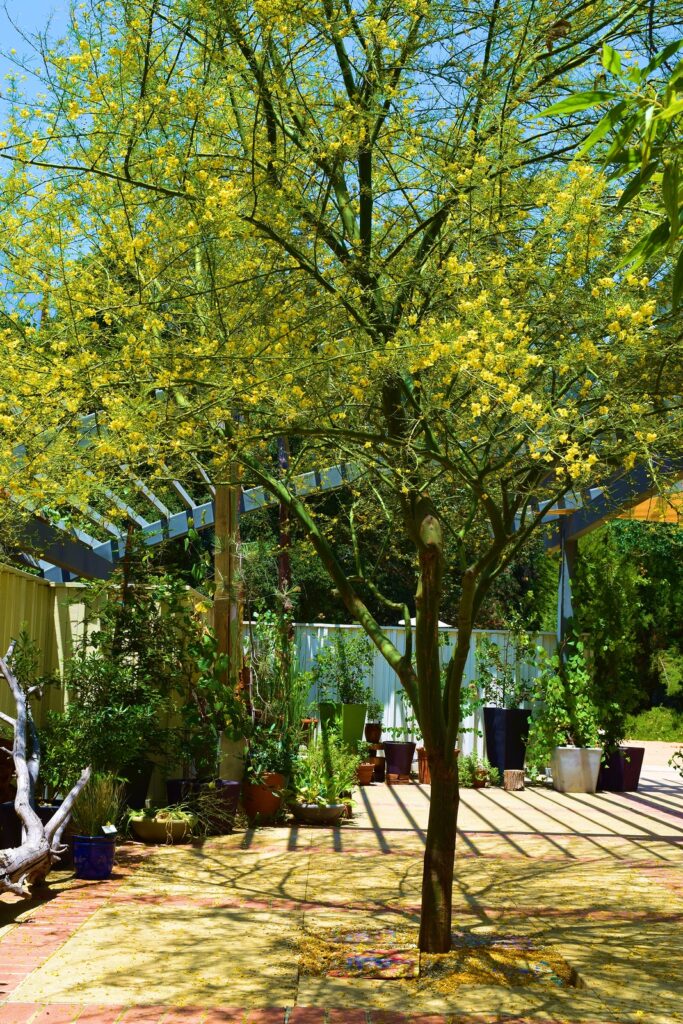
Drought-tolerant trees
| Common Name | Botanical Name | Zones |
| Acacia, Bailey | Acacia baileyana | 8-10 |
| Ash, green | Fraxinus pennsylvanica | 3-9 |
| Bald cypress | Taxodium distichum | 4-10 |
| Bay; sweet bay | Laurus nobilis | 8-11 |
| Birch, river | Betula nigra | 4-9 |
| Birch, Whitespire | Betual mandschurica japonica | 4-7 |
| Buckeye, California | Aeschulus californica | 6-10 |
| Buckeye, Ohio | Aesculus glabra | 3-7 |
| Cedar, blue atlas | Cedrus libani ‘Glauca’ | 6-9 |
| Cedar, deodar | Cedrus deodara | 6-9 |
| Crape myrtle | Lagersroemia indica | 7-9 |
| Cypress | Cupressus spp. | Varies |
| Desert willow | Chilopsis linearis | 8-9 |
| Elm, Chinese | Ulmus parvifolia | 5-9 |
| Fir, white | Abies concolor | 3-7 |
| Ginkgo | Gingo biloba | 3-9 |
| Hawthron, Washington | Crataegus phaenopyrum | 3-9 |
| Honey locust, thornless | Gleditsia triacanthos var. inermis | 3-8 |
| Incense cedar | Calocedrus decurrens | 5-8 |
| Junipers | Juniperus spp. | Varies |
| Linden, silver | Tilia tomentosa | 3-7 |
| Magnolia, southern | Magnolia grandiflora | 6-10 |
| Mahonia, leatherleaf | Mahonia beali | 6-9 |
| Maple, Amur | Acer tartaricum spp. ginnala | 2-6 |
| Maple, Norway | Acer platanoides | 3-7 |
| Maple, red | Acer rubrum | 3-9 |
| Maple, silver | Acer saccharinum | 3-9 |
| Mesquite | Prosopis glandulosa | 10-11 |
| Mountain, ash European | Sorbus aucuparia | 3-6 |
| Oak, bur | Quercus macrocarpa | 2-8 |
| Oak, pin | Quercus palustris | 4-8 |
| Oak, white | Quercus alba | 4-9 |
| Oak, willow | Quercus phellos | 4-8 |
| Olive | Olea europaea | 8-10 |
| Pagoda tree, Japanese | Sophora japonica | 6-8 |
| Palo verde | Cercdium | 9-10 |
| Pine, Austrian | Pinus nigra | 4-7 |
| Pine, Jack | Pinus banksiana | 2-6 |
| Pine, Japanese black | Pinus thunbergii | 5-7 |
| Pine, mugo | Pinus mugo | 2-7 |
| Pine, Scotch | Pinus sylvestris | 3-7 |
| Pine, white | Pinus strobus | 3-8 |
| Pistachio | Pistacia chinensis | 6-9 |
| Redbud | Cercis canadensis | 3-9 |
| Russian olive | Elaeagnus angustifolia | 3-8 |
| Serviceberry, shadblow | Amelanchier spp. | 3-8 |
| Sugarberry; hackberry | Celtis spp. | Varies |
| Yellowwood | Cladrastis lutea | 6-8 |
| Yuccas | Yucca spp. | 4-10 |















